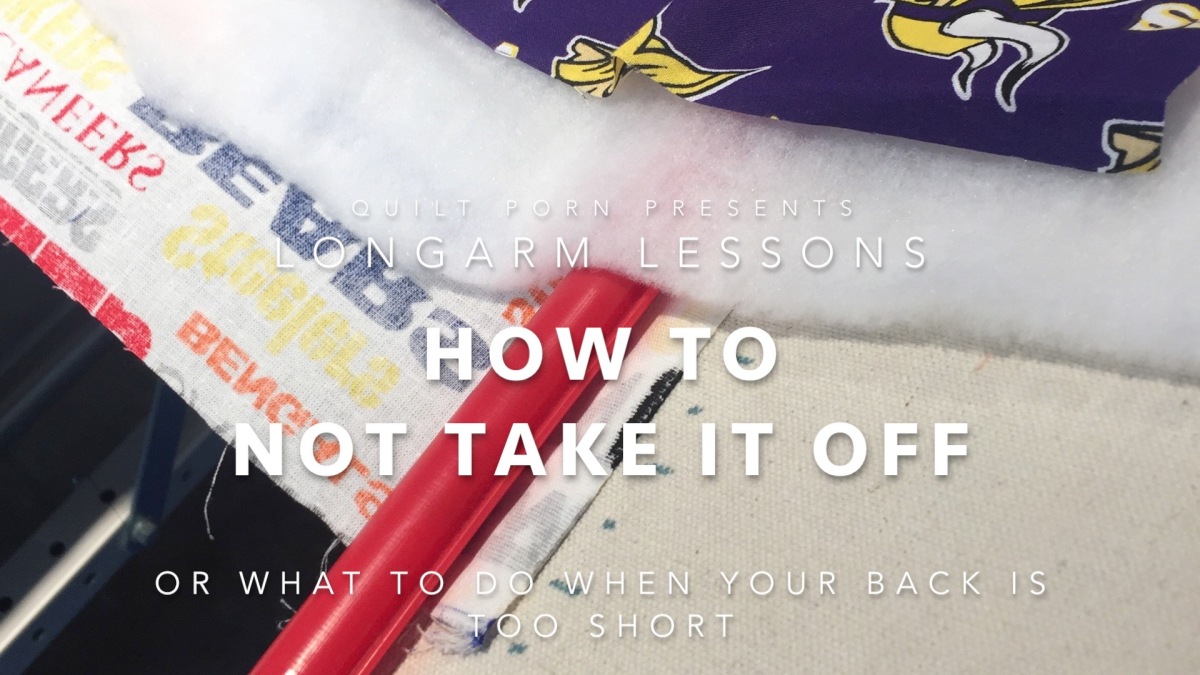I have to write about this.. I really do! I’ve written previously about how you choose your needle based upon the fabric and then you choose your thread. I’ve written about thread weight and how it looks and how it affects tension in the longarm (and the regular sewing machine. I have NOT written about thread as in brands, twists and weight and how it affects seam allowance in piecing.
THREAD MATTERS AND AFFECTS piecing big time!
Also some thread is linty and some wears your needle out faster.
So far, I have found using the three biggies (as in popular brands) in the quilting world the following.
Some thread is lintier.
Lintier, I’m not sure lintier is even a word. But there it is, I don’t like to clean out my bobbin area every time I switch out a bobbin especially when I”m in a quilt piecing frenzy. I’ve found from the cleanest (top of the list) to the lintiest (bottom of the list):
- Cleanest
- Superior Masterpiece 100% cotton 50/3
- Aurifil MAKO NE 50/2
- Mettler 100% cotton 50/3
- Coats and Clark
- Lintiest
Thread isn’t the same thickness
Thread affects my quarter inch seams. I sew almost always with Superior Masterpiece 100% cotton 50/3, so my eyeball is trained to “see” the amount of fabric to the right of the needle to give me a quarter inch seam. When I use a different thread.. it always affects my seam. I am pretty sure it is because the thread takes up some space. So thicker thread needs to be sewn with a “scant-ier” quarter inch seam than my normal seam. Mettler, even though it is 50/3 (like Masterpiece), is a bit thicker than the Superior Masterpiece 50/3. I’ve learned that to get the same finished size of a block with Mettler I have to sew a scant quarter inch and with Superior a real quarter inch. Aurifil acts more like Superior thread than Mettler, yet it still in between the two other brands. No one sees your seam allowances so if you switch thread (or machines) sew a quick test to make sure your finished blocks are the same.
Thread takes up space on the bobbin
Yes, it should be obvious. But somehow I just didn’t think about it much. You can’t wind as long an amount of thick thread as you can thin thread. I’ve taken to using Superior Bottom Line in my bobbin for just this reason. It’s super strong and it’s THIN! Yipee, I don’t have to change bobbins as often. I don’t get caught in the middle of a long seam because I didn’t think to check if my bobbin is going to run out. Talking about the threads I’ve mentioned above, here is a list about how long my bobbin lasts when wound with each one.
- Lasts longest
- Superior Bottomline 100% polyester 60/2
- Superior Masterpiece 100% cotton 50/3
- Aurifil MAKO NE 50/2
- Mettler 100% cotton 50/3
- Lasts not very long (have to wind bobbin more often)
*I quit using Coats and Clark because it’s just too darn linty. So I don’t remember how it is in the bobbin, thus it isn’t on the list about bobbin changing frequency.
As to why each thread is a different thickness, I’ve posted about thread weight 50 vs 60 etc. Thread weight isn’t very accurate when comparing different brands of thread because there really isn’t a standard system. So in my examples above, at first glance, it doesn’t make sense that the Aurifil Mako NE 50/2 is thicker than the Superior Masterpiece 50/3. However the differences I’ve experienced seem to be the truth of it.
Superior has a great article about thread weight here. UNDERSTANDING THREAD WEIGHT
So why would I use the lintier thicker threads? I want the effect they create sometimes. Sometimes I need a specific color and the nearest shop doesn’t have the brand I want. Sometimes I just got a sample, or a free spool. Sometimes, I just try something new. I do a lot of couching on the surface and I buy a lot of different threads for that purpose and I might need a specific color that I don’t have in my preferred piecing brand.


